Fighting the Soberanes Fire
California Megadrought
|
NEW ESRI StoryMaps: What's On Our Shelves & NWNL Song Library & No Water No Life ESRI |
California Megadrought
Rick Barton
Rocky Mountain Incident Management Team
Chris Mailes
Fire Dept Battalion Chief, Santa Barbara Firefighter from Colorado
Male Bystander
Alison M. Jones
NWNL Director and Photographer
Lana Straub
Environmental Journalist
Conference in Sacramento CA, Lana Straub and I drove up from Santa Barbara via the “PCH” (Pacific Coast Highway. Along the Big Sur, we met 3 fire-fighters, set up to teach passers-by about wildfires.
Given California’s prolonged mega-drought, it wasn’t surprising to find a firefighters’ staging post below the Santa Lucia Mountains Forest Fire. They shared their knowledge, tactics and maps of the fire with any interested on the fiery consequences of droughts and the processes and tolls of firefighting. There was no talk of climate change becoming a major cause of fires. It wasn’t needed. What is needed is an emphasis on the horrors and difficulties in fighting these fires, inflamed by a lack of water, and ironically put out by massive amounts of fresh water.
NB: The Soberanes Fire, caused by an illegal campfire, burned over 130,000 acres and over 50 homes from July to October 2016. Its suppression cost about $250 million.
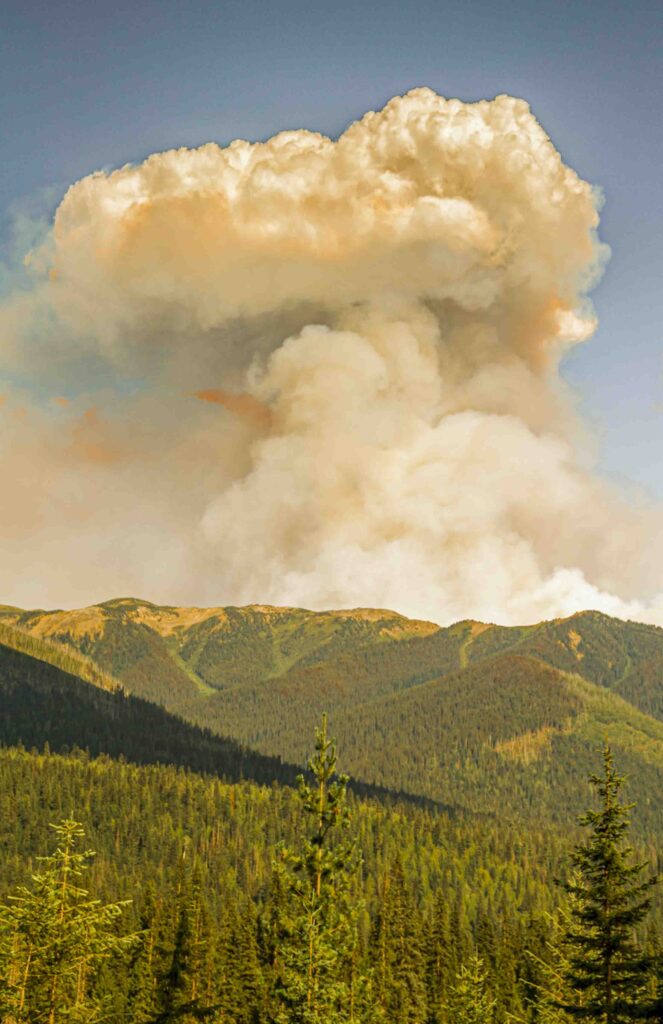
FIRE SUPPRESSION RESPONSIBILITY
SANTA BARBARA’S WATER ISSUES
ECOTURF REDUCES RESIDENTIAL FIRES
THE JOB of FIREFIGHTING
PAST FIRES and THIS FIRE
HELPING & UNDERSTANDING FIREFIGHTING
ONLY FRESH WATER USED
THE SANTA YNEZ VALLEY FIRE
Being on the fire department means my whole livelihood focuses on water. You don’t just turn off a fire. – Firefighter from Santa Barbara County
All images © Alison M. Jones, unless otherwise noted. All rights reserved.
NWNL Hello. We were heading north; but we turned around when we saw your educational set up with this amazing map of this fire. What a job you have! You are heroes. How do you describe the characteristics of this fire and how are you approaching this fire?
RICK BARTON Well, as soon as the winds are favorable, we’ll try to move into the fire from a second position; come up; and then tie if off. Some people just want us to put it out. Other people say, “Don’t let everything burn.” The trouble is, you don’t just turn off a fire.
MALE BYSTANDER So you are a fireman from Santa Barbara. But what about the rest of you? Did they fly others in to fight this fire here in these mountains below the Big Sur?
RICK BARTON Yes. I’m from Colorado. Some of our folks are from Alaska. Some folks are from other places. Every two weeks we rotate out of here to get back to our own forests in our districts; and then we bring in other firefighters. Many of our firefighters aren’t full-time. They might be hydrologists or biologists – and if so, they can come for only 2 weeks, maybe 3 weeks. Their jobs with the Forest Service, their state or a certain park won’t let them leave for long durations.
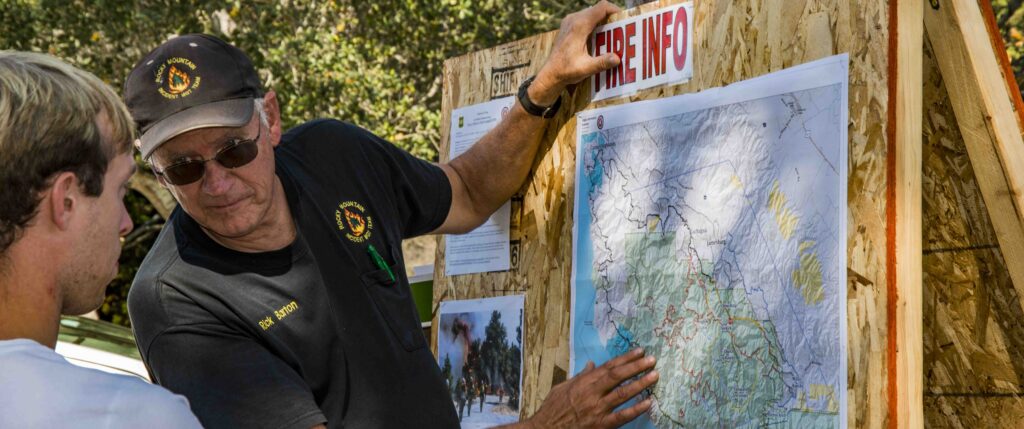
LANA STRAUB I hear many of you are volunteers, so the government is not paying you. As far as I know, you’re not getting any money for doing this work.
CHRIS MAILES Well, we haven’t had any trouble on this fire getting the resources we need. It’s just you can’t hire the amount of folks a fire demands until there is a fire that needs tending. We do have certain full-time fire people, but then we often must augment that with many others.
LANA STRAUB We lived in California for three years in the early ‘70s; but we never saw any fires like this.
CHRIS MAILES Well, we’ve just had 5 years of drought here….
LANA STRAUB We now live in Texas, and so we well understand that drought is a problem these days.
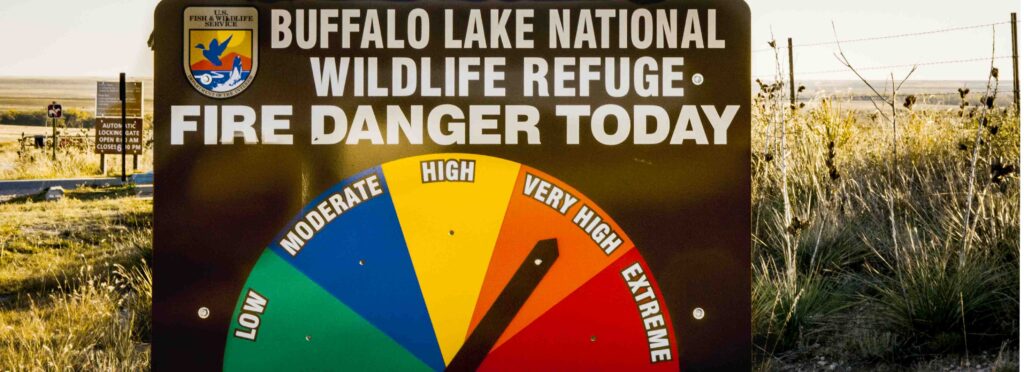
MALE BYSTANDER Does Forest Service have overall responsibility for extinguishing this fire?
CHRIS MAILES Here we’re in Garrapata State Park. Originally, the State of California oversaw suppression here. But as the fire grew and moved into the forest, a unified command was put in place for the State of California and other agencies.
Fortunately, one year ago, when the Pacific Coast Highway was washed out by El Nino rains here, our City Administrator Paul Casey said, “We are going to finish fixing this road whether El Nino hits again or not, because otherwise we are going to have another problem.”
LANA STRAUB And that would have ended critical access to this coastal route.
NWNL I used to live in Santa Barbara, and I’m now documenting California’s water-related issues created by this mega-drought. Obviously wildfires are one aspect of that.
CHRIS MAILES Joshua Haggmark works with the City of Santa Barbara and has been very involved in water resources. They call him “the water guru.” If you can’t get a hold of Josh, there is the Public Works Director. She’s a great lady, as is Rebecca Bjork. Go to santabarbaraca.gov to learn more.
Last year (2016), national news covered the Rey Fire in Santa Barbara County, east of Lake Cachuma. It did significant damage to facilities in the Santa Ynez Recreation Area. His name pops up all the time. He’s also Project Manager for the city’s de-salinization plant. Today’s Charles E. Meyer Desalination Plant cost $50 million. [Editor’s Note: As of 2024, this plant was producing 3 million gallons of drinking water per day.]
There was a huge article in the Santa Barbara Independent that basically said the Conservation District, which has all the water for the Santa Ynez Valley, did an end-run-around to get water released. It was against the wishes of Santa Barbara; but he basically was entitled to do it.
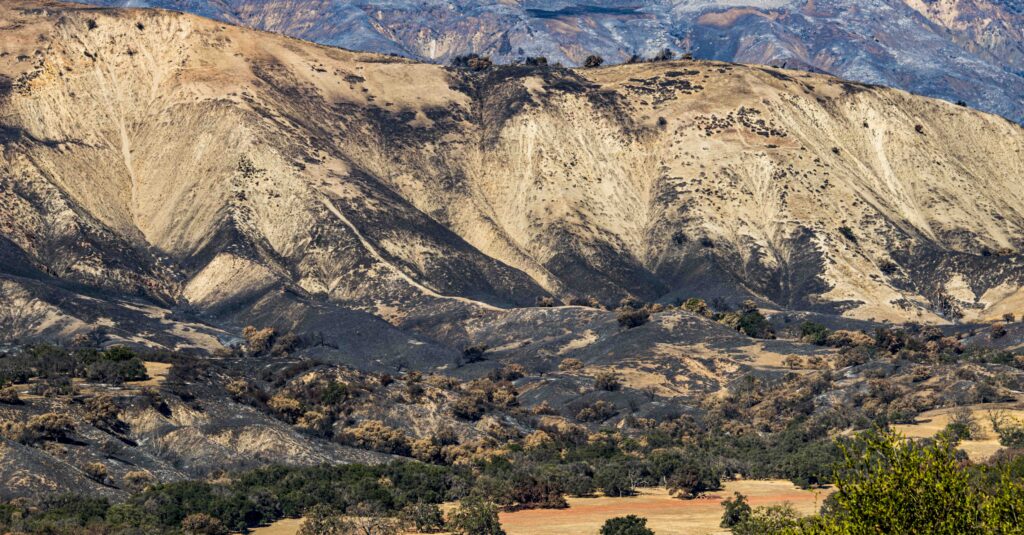
NWNL I saw that; and it certainly angered people. We must all start thinking of the long-term consequences.
CHRIS MAILES Yes. Even if we get 1,000 inches of rain this winter, we’ll continue to face droughts. As I said, it’s supposed to rain this winter.
LANA STRAUB What about Montecito? Do they get separate allotments for their community?
CHRIS MAILES What’s interesting is that they increased the capacity of their reservoir. Josh could tell you how much it increased; but I heard it’s now holding upwards of 50% more water. And I heard that they are considering selling some water.
NWNL Otherwise, Montecito would have been “up the creek” – literally!
CHRIS MAILES They truck it in with semi-trucks. Apparently, Oprah is trucking in water.
LANA STRAUB They do that in Texas too.
CHRIS MAILES Yes, Montecito is bringing water in. If you fly over Montecito, there are gorgeous green-grass estates. At my house, I did do something that made me feel a little bit guilty. I had to turn the sprinklers on for about two minutes once a week. Our lawn is next to the pool, so when it died back in the drought, all the dead grass started going in the pool and clogged the filter. I turned it on, literally, just to dampen it down.
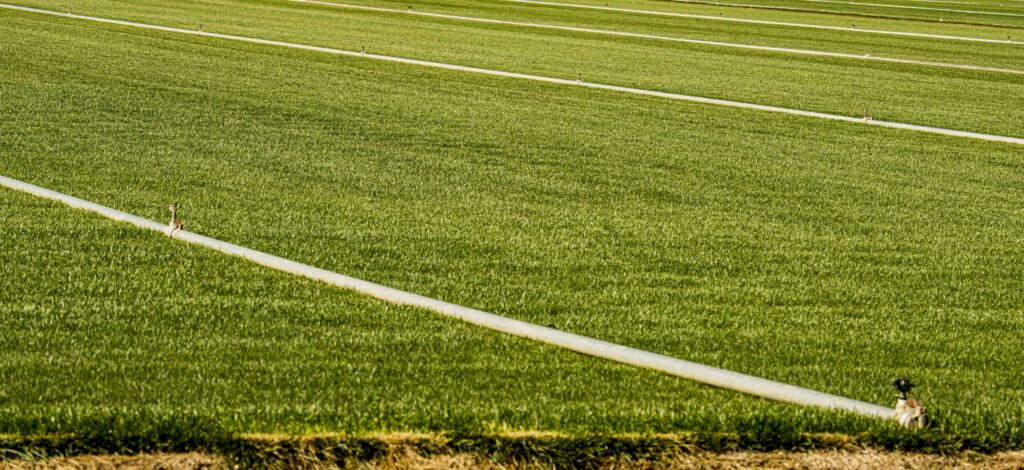
NWNL Do these droughts cause you to consider changing your lawn to fake grass?
CHRIS MAILES Funny you should say that. My best friend is a major turf installer in the Santa Ynez Valley; and he wants to put in artificial turf at my house. It’s very interesting. Did you know that stuff is made on carpet looms in the South?
NWNL No. I’ve never seen it up close enough to touch it.
CHRIS MAILES It’s phenomenal. They’re getting so good now. You can order it by height or by density. Do you want a little brown in it? Okay! It looks so real. There are a bunch of companies that do that. I think there’s a company out of Santa Barbara called Eco-Turf.
NWNL Yes, I’ve seen their truck and wondered about their sales.
CHRIS MAILES Many people are putting that in since our lawns are just dead. “Gold is the new green.” That’s the big motto in Santa Barbara. It’s interesting being on the fire department because my whole livelihood focuses on water. So fake turf is what I use. That’s what keeps people’s houses still standing when a fire is done. But still – even with fake turf – we are so careful with what we do with water. We’re so careful to just use minimal amounts of water.
RICK BARTON We’ve really limited our training with water.
LANA STRAUB What do you use during training instead of water?
RICK BARTON If we’re using hoses, we just do dry hose. When we can’t charge the lines with water, we just use them dry to put fires down. When we train with lines charged with water put three guys on a nozzle.
LANA STRAUB Or otherwise they’ll hurt themselves?
RICK BARTON Yes, they’ll hurt themselves. Fires are not a two-man job; and they’re often at 2:00 in the morning. For the guys who haven’t put their hands on a nozzle, it can hit them in the head and knock them out. It’s a workout just to hold the nozzle when you’re flowing 200 gallons through one.
RICK BARTON As firefighters, we’ve got to work together and minimize the long-term effect on the countryside for local people. We have a Repair Program going on right now where the fires have cooled down. We go in and tryto repair the landscape as much as we can, and especially roads and bridges. Plus, after the fire, we set up a “Burn Area” for an emergency response team that comes in. All the “-ologists” study the area for erosion and such. Hydrologists, biologists and others come say, “Here’s what we can try to do to prevent future fires… ; even if we can’t stop flooding or other disasters.”
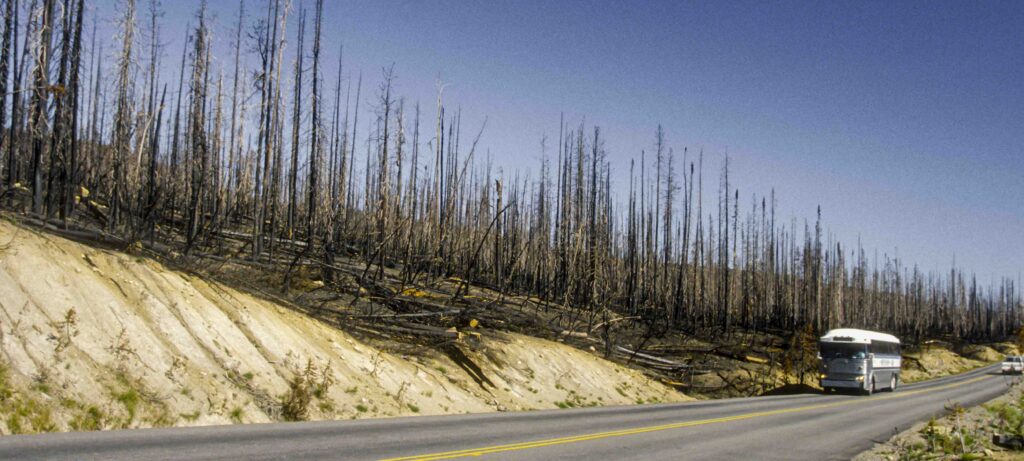
NWNL Where have you each spent time fighting fires before this one?
CO FIREFIGHTER Last year my primary time was in Washington State. I was in Kettle Falls [on the Columbia River at the border of Washington State and British Columbia]. There I had 20-person crews and 10 engines. I had other kinds of resources there. This is kind of easier to manage.
NWNL How does this Soberanes Fire rate in terms of being California’s worst or biggest fire in California?
RICK BARTON It’s not the biggest fire at all. I think the biggest was 50,000 more acres than this – maybe about 170,000 or 175,000 acres. This is a large fire; but, most notably, this is the most expensive fire in California history. It just reached that mark.
NWNL Why?
RICK BARTON Because of local values at risk: the homes and other resources. We’ve thrown a lot of resources at this fire. We want to stop it and prevent it from going down into more communities here.
We’re trying to put a box around it down here and not let it progress. With the drought, the wood out here is even drier than kiln-dried lumber in a lumberyard. Last night, the humidity on parts of the fire were in the single digits. In other parts of the fire, it gets up to a low 20 maybe. During the daytime, it’s been mostly single digits, maybe 12, maybe 11, maybe 9…. We’re trying to stop it by throwing a lot of costly resources at it. Aircraft is very expensive; and we have 2,000 firefighters. If you start counting all that, it’s expensive.
MALE BYSTANDER Given the terrain and temperature, how long do these firefighters stay on the line?
RICK BARTON We try to get them out after 14 days. We’re mandated to have at least one day off.
MALE BYSTANDER How many hours are they online per day?
RICK BARTON Sixteen hours a day average, no more. Many of us are working 14 or 15 hours a day right now. But we used to have no limits.
I remember my first California firefighting trip was 28 days in 1987. We had 1,400 fires start the same weekend in Northern California. At that point, we were ingesting smoke for months and months and months. Now we disallow that. Too much is too much. We must get people out of here after 21 days at the most and send them home for a week.
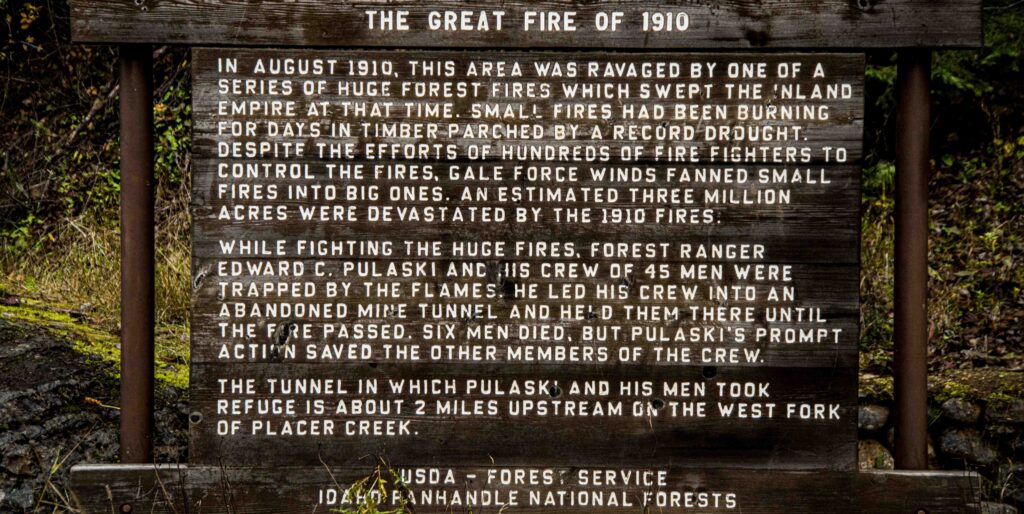
RICK BARTON We’re here to share our concerns, and we thank you for your concern.
LANA STRAUB Is there a way that passers-by like us can contribute financially to this effort?
RICK BARTON Not really. What we suggest you do is contact your local fire department and say, “Here’s something to help you out.” Volunteer fire brigades have been having big fundraisers. Since they are unpaid volunteers, your contributions go to all their equipment, supplies, and other supportive items like that.
NWNL What’s the area within the black line on this map?
RICK BARTON The black line is what we consider “cold,” or good. In other words, we just patrol that, because we consider that is well controlled. We know we won’t lose that area.
The infrared line shows us the “hot area.” We want to get outside of that to burn off around that line, maybe off the road. We want to try to reinforce that; work around here; and try to come around to Arroyo Seco.
Here we have a 250-acre “Escape Area” that shifted, as embers blew over. So, then we pulled people back and got them onto another “Escape Area.” Hopefully, later we’ll get them back into this.
NWNL How many acres would you say are threatened here today?
RICK BARTON Right now, we have 121,000 acres that are affected by the fire.
NWNL That means they have been burned?
FIREFIGHTER 1 Yes. Remember, a fire is like a tornado. It can really burn very hot in one area, and then maybe skip over one area and go elsewhere to really burn. There are some rocky areas that aren’t going to burn. And sometimes meadows won’t burn. But 121,000 acres are involved in the “Burn Area” right now. That area is approximately just a bit larger than Lake Tahoe. They say the Alaska fires were bigger than the state of Delaware.
NWNL What is the size of the area within this cold line?
RICK BARTON The green area is National Forest. We have infrared maps; and people are mapping the area for us all the time—they say around 121,000 acres are affected now.
NWNL Do you get help on this from satellite information?
RICK BARTON We do. Yet, although the satellite imagery helps us some, infrared flights are more effective for us right now. They can crisscross the areas.
NWNL Yes, I can see hotspots.
RICK BARTON Our crews will get maps a little more detailed than this; but they’ll say, “Here, here….” They GPS that, scout it to see if there could be any problems and then just go in.
Then they look to see whether a chimney or a tree is kicking out sparks that could cause damage. If so, they try to get rid of that by bringing in hoses and water in buckets. They call to base and say “Hey, I’d like a water drop. Can you bring the helicopter over here?”
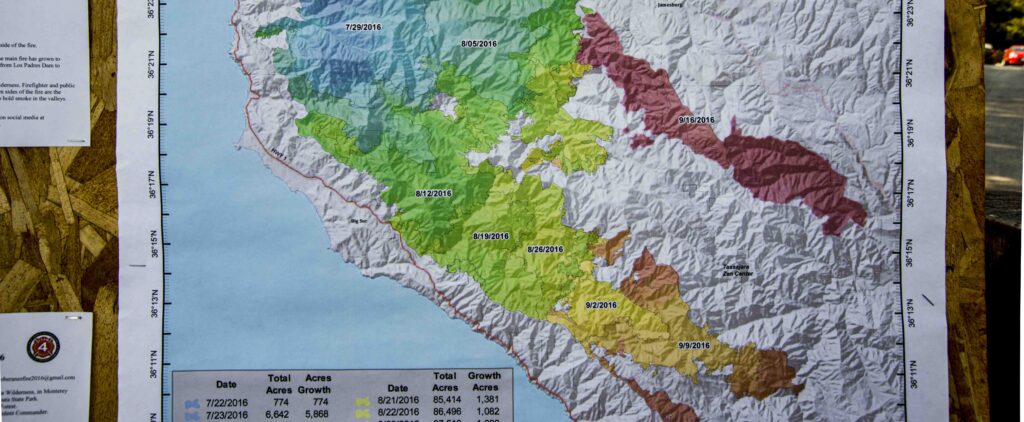
NWNL To tie this in with the current drought, is it hard to get enough water to fight this fire?
RICK BARTON Yes. Water is always an issue for us in a drought, or in certain dry parts of the country. Thus, we have big water tenders that can carry 7,000 gallons of water that we pre-position. “Water tenders” are pre-positioned planes that drop water tankers. We also have smaller engines that will hold anywhere from 250-400 gallons of water. When short of water, they go down and run a hose to where the water tenders are stationed.
LANA STRAUB Do you use water from the ocean?
RICK BARTON Not from the ocean, typically. Only in emergency situations. There are three reasons we don’t want to use salt water.
We’re a lot safer getting and using fresh water. Fortunately, there are two small, freshwater lakes right below us here.
#1 We drop 2,500 gallons at a time; and that much salt water isn’t great on vegetation.
#2 Engines and turbines on our helicopters are sensitive to salt water as it is very corrosive.
#3 A snorkel can come down from our biggest, heavy helicopters and get down low enough to suck up 2,500 gallons of water – but can’t get hit by waves!
NWNL Since we’ve been here, helicopters have come in from the fire about every 8-12 minutes!
LANA STRAUB How much have the freshwater lakes gone down since you’ve been here?
RICK BARTON I have no idea, because they are fed by a spring and apparently refilling themselves effectively.
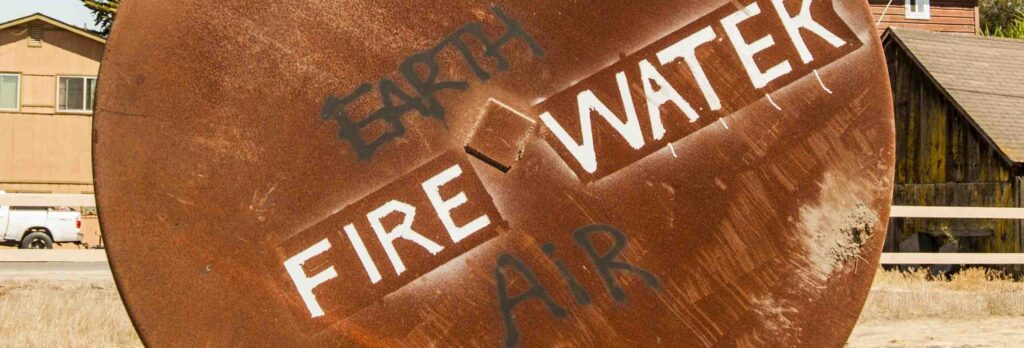
NWNL I was just in Santa Barbara County where they razed fire back in the Santa Ynez Valley.
CHRIS MAILES They got water from a variety of sources there. My buddy was on that fire; but I wasn’t, so I don’t know if they got it out of the Lake Cachuma Reservoir. But if not, they were getting water from water tanks and trucks bringing in water.
NWNL Where do those trucks get their water? Can you use salt water from the Pacific?
LANA STRAUB I’m from Texas where I too hear that question when we have fires….
CHRIS MAILES There is a lot of salt water out there in the Pacific, but even if salt water didn’t kill vegetation, the other thing too is we don’t want to put a helicopter out in the sea and have them hit a wave or lose some altitude if a wave touches one of its skids.
So, the trucks grab water from hydrants. But it’s a huge drain on a local water supply.
NWNL Which is already in crisis in Santa Barbara….
CHRIS MAILES Yes, it is already completely taxed. But the question is do you use a million gallons of water right away; or do you use 10 million gallons if you didn’t do anything right away? You’ve kind of got to spend 50 cents to save $10 is kind of the way it works. Every time we open a hydrant to fill out water tanks on our firetrucks, we just go bonkers. It’s horrible. It’s horrible. The drought affects us all.
NWNL It does. It affects the whole country because we all depend on California agriculture.
RICK BARTON Now you see why we don’t drop the saltwater!
NWNL Ah, yes! Thank you all for being here to share your thoughts and knowledge with all of us who pass by. We are all in this together!

Posted by NWNL on March 9, 2024.
Transcription edited and condensed for clarity by Alison M. Jones.
All images © Alison M. Jones, unless otherwise noted. All rights reserved.
